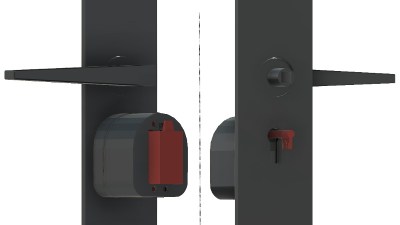What’s wrong with the above picture? Failure can be an excellent teacher, and [J. Peterson] reminds us all of this when he says to remember to model the environment when designing things in CAD. He contrasts a failure with a success to demonstrate what that means.
The failure was a stand for a screwdriver set, shown above. He modeled up a simple stand to hold a screwdriver handle and the bits in a nice, tight formation. He didn’t model any of parts, he just took some measurements and designed the holder. Everything fit just fine, but it had a major ergonomic problem: you can barely reach the handle because it is fenced in by the surrounding bits! Had he modeled all of the parts during the design phase, and not just the part he was making, this problem would have been immediately obvious during the design phase.
The contrasting success is an adapter he designed to mount an artistic glass marble to a lit display stand. The stand itself as well as the glass marble were modeled in CAD, then the adapter designed afterwards to fit them. With all of the involved objects modeled, he could be certain of how everything fit together and it worked the first time.
Now, to most people with a 3D printer of their own, discovering a part isn’t quite right is not a big (nor even a particularly expensive) problem to have, but that’s not the point. Waste and rework should be avoided if possible. To help do that, it can be good to remember to model the whole environment, not just the thing being made. Add it on to the pile of great design advice we’ve seen for designing things like enclosures and interfaces.




















